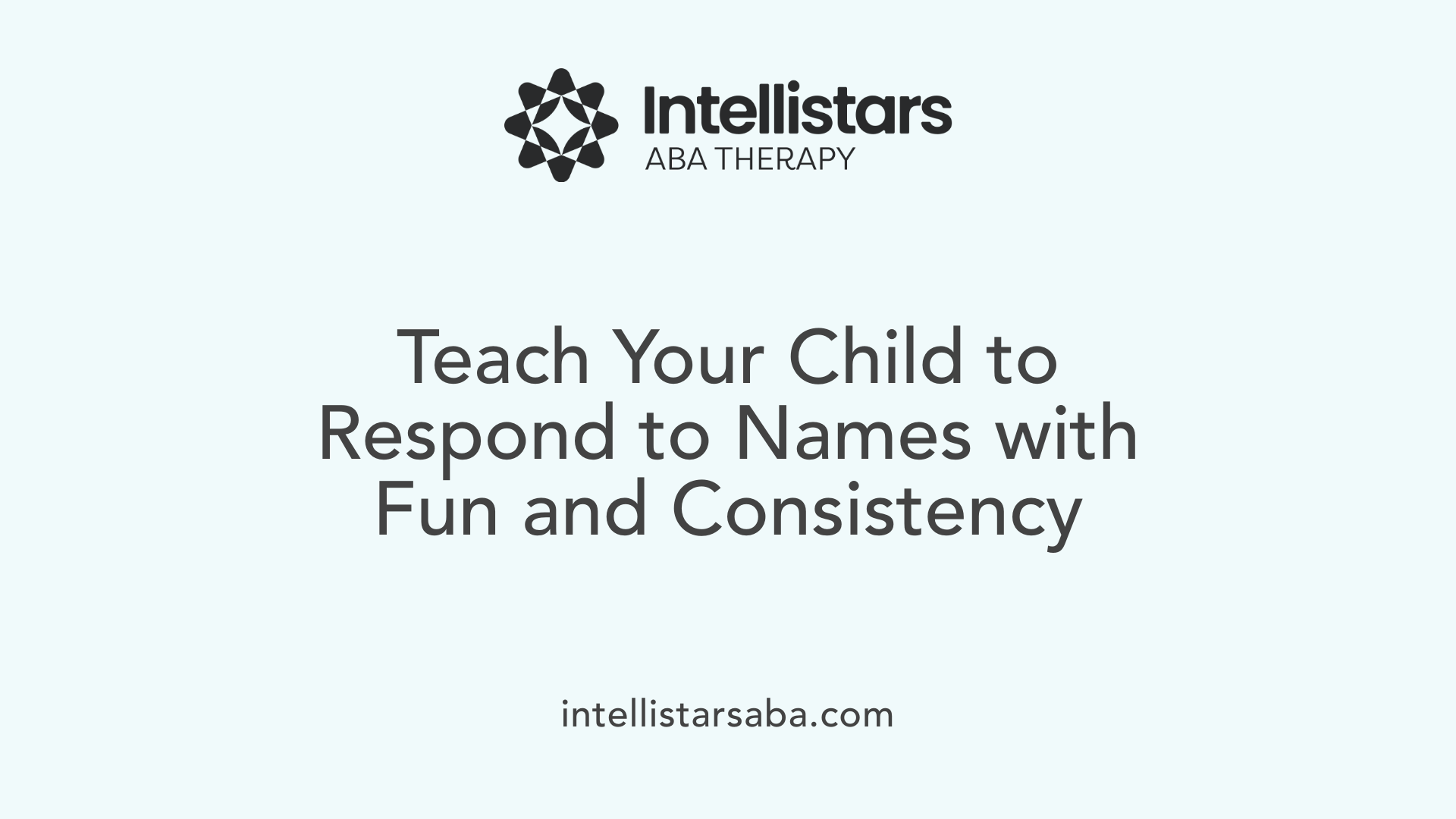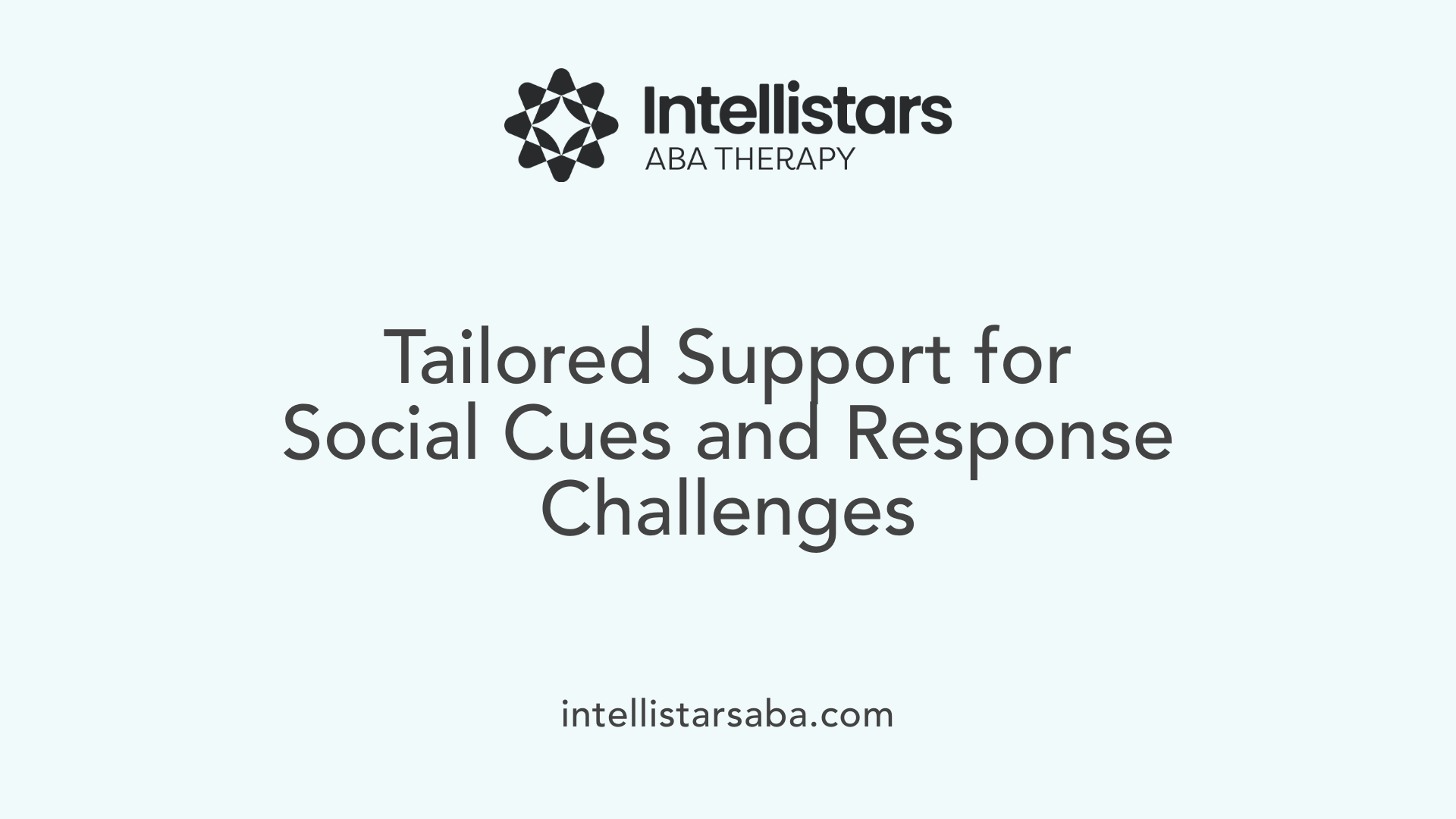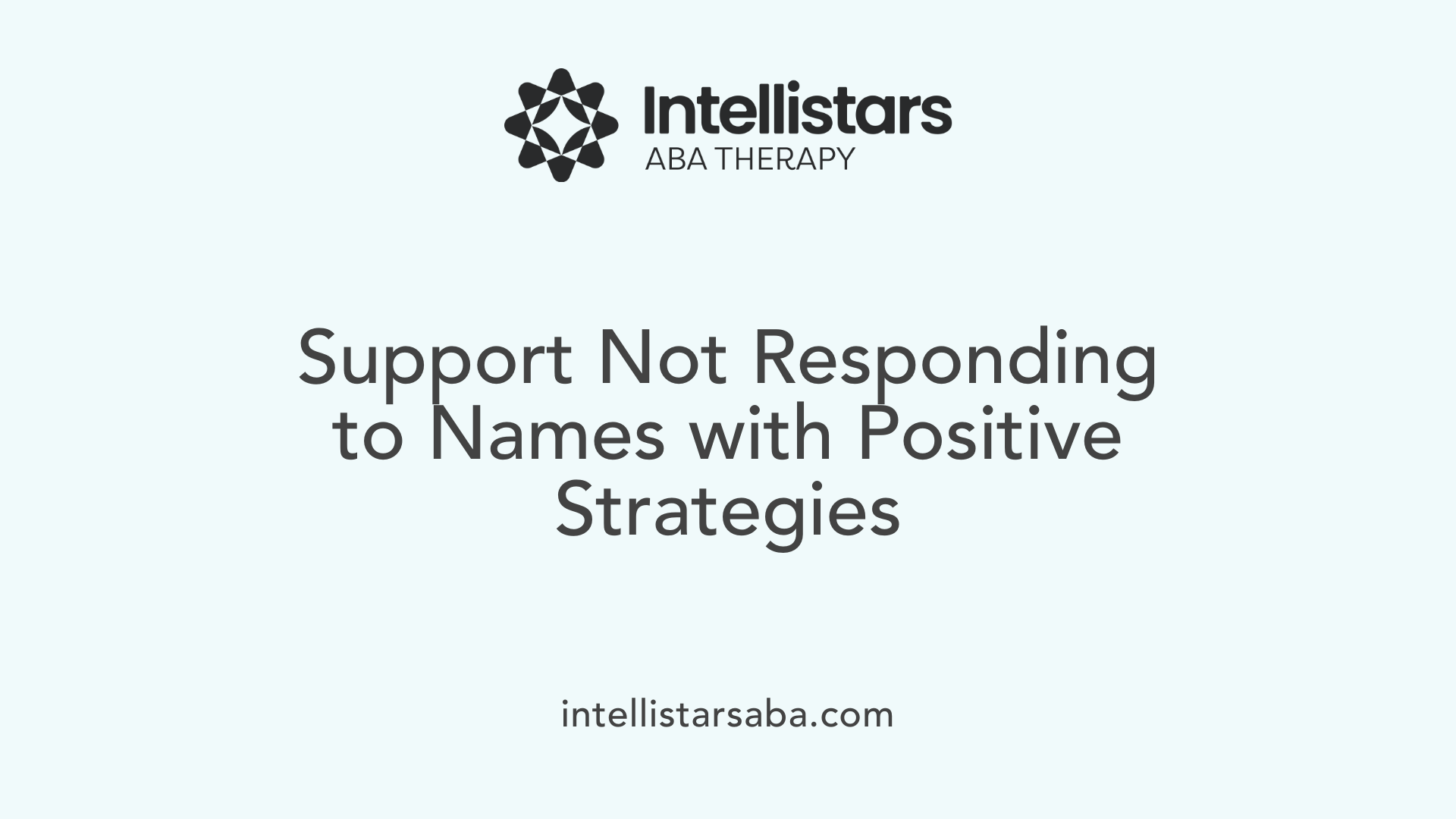Understanding the Importance of Responding to Names and Greetings in Child Development
Responding to one’s name and greetings is a fundamental aspect of a child's social and communication development. These behaviors not only reflect a child's growing language skills but also serve as vital building blocks for social engagement, safety, and the development of complex social skills. Recognizing when a child begins to respond and knowing how to support them can make a significant difference in their social confidence and communication abilities.
Recognizing Typical Age Milestones in Responding to Names

When should I worry if my baby is not responding to his name?
Most typically developing children begin responding to their name between the ages of 6 and 12 months. By around 9 months, many babies will turn their head, smile, or look at you when called. However, if your child does not respond to their name by 12 months, it is a good idea to monitor their development more closely and consider consulting a pediatrician.
Difficulty in responding can be related to hearing issues, attention difficulties, or autism spectrum disorder. Ruling out hearing impairment should be the first step. Early intervention can be very helpful. Techniques such as reducing the overuse of the child's name in negative contexts, pairing it with positive reinforcement, and practicing calling your child from a distance can promote responsiveness. If concerns persist, working with a speech-language pathologist or other developmental specialists is advisable.
Regular checkups and early support can make a significant difference in developing communication skills and social engagement.
At what age do children typically start responding to their name?
Children generally start recognizing and responding to their name between 4 and 9 months of age. By around 9 months, most infants will consistently turn their head, smile, or make eye contact upon hearing their name.
Some infants may begin responding as early as 4 to 6 months, while others may take closer to 9 months. It is common for responses to develop gradually during this period. By 9 to 12 months, most babies reliably recognize their name.
This milestone is important because it indicates emerging social awareness and communication readiness. If a child is not responding by this age, parents are encouraged to seek guidance from healthcare professionals.
What should I do if my child does not respond to their name by 1 year or 18 months?
If a child does not respond to their name by 12 or 18 months, it is essential to rule out hearing problems first. An audiologist can accurately assess hearing ability. Simultaneously, try to use strategies to encourage response: call your child's name in a warm, engaging tone, pair it with rewards like toys or favorite activities, and practice consistently.
Reducing the frequency of calling in negative or demanding ways can help prevent negative associations with the child's name. Using visual cues, such as waving or showing a favorite object when calling, can also be effective.
Pay attention to other developmental signs like limited babbling, difficulty following instructions, or social withdrawal. Collecting observations about your child's responses and behavior can aid professionals in making proper assessments.
If there is no improvement with these strategies, or if other concerns arise, consult a healthcare professional or speech-language pathologist for further evaluation. Early support can help optimize your child's communication and social skills and ensure any underlying issues are addressed promptly.
Effective Techniques to Foster Response and Social Engagement

How can I teach my child to respond to their name and social greetings?
Helping a child respond consistently to their name and social greetings is a vital step in developing communication and social skills. Start by calling your child's name in a calm, warm tone, pairing it with a visual cue like a wave or smiling face. Incorporating fun activities such as singing songs or playing games can make the experience engaging.
Positive reinforcement plays an essential role. When your child responds, praise them with enthusiasm, a hug, or a small treat to reinforce the behavior. Using picture cards or social stories helps children understand the context of greetings and recognize social cues.
Systematic prompting, like guiding their face toward yours or gently encouraging them to look at you when calling their name, can aid responsiveness. Over time, gradually reduce prompts as your child gains confidence. Video modeling—showing videos of other children responding appropriately—can also be an effective visual tool.
Practicing these skills in familiar environments with familiar people helps your child generalize the response across settings. Be consistent; involve family members, caregivers, and teachers to reinforce the behavior in different contexts.
If delays persist or additional needs are suspected, consulting a speech-language pathologist is recommended. These professionals can offer personalized strategies and support tailored to your child's development and ensure progress in social communication.
What are effective techniques for encouraging children to respond socially and verbally?
Encouraging children to respond both socially and verbally requires creating a supportive environment that promotes communication. Begin by modeling appropriate social behaviors yourself—say hello, greet with a smile, and demonstrate kindness. Children learn a lot through observation.
Using positive reinforcement is vital. When your child attempts to speak or respond, praise their efforts openly and enthusiastically. This encouragement motivates them to continue trying. Incorporate engaging play activities—such as turn-taking games or role-playing scenarios—where they can practice social responses in a relaxed setting.
Active and reflective listening makes children feel valued and understood. Repeat what they say to show interest, and ask open-ended questions to encourage more conversation.
Creating opportunities for social interaction in natural settings, like playdates or family gatherings, provides real-life practice. Providing clear, consistent expectations and gentle guidance helps children learn appropriate responses.
Additionally, adults serve as effective role models. Demonstrate the behavior you want to see—use polite words, manage conflicts calmly, and show empathy. These behaviors shape children’s understanding of social norms and foster their verbal communication skills.
Harnessing these methods will gradually increase your child's willingness and ability to respond verbally and socially, paving the way for healthier interactions and deeper connections.
Supporting Children with Developmental Challenges in Responding to Social Cues

How can parents support children with developmental challenges in responding to social cues?
Supporting children who face difficulties in responding to social cues requires patience, consistency, and a tailored approach. Parents can start by creating a nurturing and predictable environment that helps children feel safe and confident. This stability encourages children to explore social interactions without fear.
Using visual aids such as picture cards, social stories, and visual schedules can help children understand what to expect and recognize different social cues. For example, visual prompts can show what a greeting looks like or how to respond politely.
Role-playing activities, puppet play, and interactive games are effective tools for teaching social responses. These activities provide a safe space for children to practice recognizing and responding to cues like eye contact, facial expressions, and tone of voice.
Modeling positive social behaviors is essential. By demonstrating sharing, turn-taking, and respectful communication regularly, parents give children clear examples to imitate. Discussing feelings and reading books focused on emotions and social interactions also enhance understanding.
Collaboration with professionals, such as speech therapists, occupational therapists, and special educators, allows parents to develop strategies uniquely suited to their child’s needs. Individualized support plans can target specific challenges, boosting confidence and social response skills.
Consistent and positive reinforcement—praising children when they respond appropriately—encourages ongoing engagement. Over time, these practices foster better social responsiveness and help children thrive in social environments.
What are signs of social or communication delays related to response to greetings?
Recognizing signs of delays in social or communication skills related to greetings is important for early intervention. Children who have such delays may rarely respond when someone initiates an interaction or may do so with very minimal effort, such as a fleeting glance or a brief wave.
They may struggle to use greetings themselves properly or forget to greet others altogether. Sometimes, their responses may seem out of context or inconsistent, indicating difficulty understanding the social significance of greetings.
Furthermore, children with delays might have challenges interpreting gestures, facial expressions, and other nonverbal cues. They may not follow or give cues like pointing or showing, which are foundational for social communication.
Delays can also appear as reluctance or avoidance of social contact, reduced sharing or reciprocity, and difficulty understanding social rules or expectations.
Recognizing these signs early can lead to prompt support, helping children develop fundamental social skills and fostering better interaction with peers and adults.
Strategies for Supporting Response to Naming and Greetings
Supporting children in responding to their name or greetings involves various practical strategies:
- Creating a distraction-free environment to help children focus.
- Using an engaging tone, exaggerated gestures, and facial expressions to draw attention.
- Incorporating visual cues, such as pointing at the child or showing a related picture.
- Practicing consistently, calling the child’s name or offering greetings at predictable times.
- Using positive reinforcement like praise, rewards, or favorite activities.
- Making the process fun through games, songs, or playful routines.
- Involving family members to reinforce responses in different settings.
These methods, combined with professional guidance, can gradually improve responsiveness, making social interactions more natural and enjoyable.
Why early intervention matters
Early identification and support are crucial for children experiencing delays in responding to social cues. When parents observe persistent challenges in a child's responsiveness to names or greetings, consulting professionals such as speech-language pathologists, occupational therapists, or pediatricians can provide valuable insights.
Early intervention addresses underlying causes, such as hearing difficulties or developmental delays, and offers targeted strategies for improvement. For example, if hearing impairment is suspected, audiological evaluations can confirm diagnosis and support necessary treatments.
Interventions are more effective when they are consistent, engaging, and tailored to the child's unique needs. The overall goal is to enhance social communication skills, promote emotional well-being, and build a foundation for more complex social behaviors.
How can visual aids and social stories facilitate learning?
Visual aids and social stories are instrumental tools in teaching children how to respond to social cues. Visual aids like picture cards can help children recognize common social situations, such as hearing their name or greeting others.
Social stories describe specific social events and appropriate responses in a clear, simple manner, often accompanied by visual cues. For example, a story might illustrate what a greeting looks like, how to respond, and what feelings might accompany these actions.
These tools help children understand expectations and reduce anxiety associated with social interactions. Repetition and consistency in using visual aids make learning more effective.
Collaboration and tailored strategies for success
Working with professionals ensures that support strategies are personalized for each child's developmental profile. Speech therapists can work on language comprehension, while occupational therapists might focus on sensory processing.
Regular communication between parents and professionals helps track progress and adapt strategies as needed. Tailored interventions, mindful of the child's interests and strengths, foster better motivation and engagement.
Incorporating family routines, cultural practices, and individual preferences makes these strategies more applicable and sustainable, supporting children in developing social responses naturally over time.
| Strategy | Description | Benefits |
|---|---|---|
| Visual Aids | Use picture cards, social stories, visual schedules | Clarifies expectations, reduces anxiety |
| Play & Role-Playing | Practice responses through engaging activities | Builds confidence, reinforces learning |
| Modeling | Demonstrate social behaviors consistently | Provides clear examples |
| Reinforcement | Praise, rewards, positive feedback | Encourages continued effort |
| Professional Collaboration | Adapt strategies with expert guidance | Customizes support, maximizes effectiveness |
Fostering social skills in children with developmental challenges requires a compassionate, consistent, and multifaceted approach. Early support and cooperation among parents, caregivers, and professionals pave the way for improvements in response to social cues, enriching children’s social lives and their overall development.
Recognizing Signs of Social and Communication Delays
What are signs of social or communication delays related to response to greetings?
Signs of delays in responding to greetings include children not reacting or responding very minimally when someone addresses them. For example, they might ignore a parent calling their name or fail to say hello back. Such children may also struggle to use greetings themselves, like saying “hi” or “bye” appropriately.
Beyond verbal responses, these delays often show up as difficulties in understanding or using gestures and facial expressions. Children might not smile in social situations or seem unaware of nonverbal cues like waving or nodding.
Another indication is challenges with social reciprocity — that is, normal back-and-forth exchanges. Children may avoid sharing knowledge, forming friendships, or interpreting implied messages during interactions.
Overall, these behaviors point to difficulties in engaging socially and responding in ways that foster connection. Recognizing these signs early can facilitate timely support and intervention.
Implications of such delays
When children show delays in responding to greetings, it can impact their overall social development. Difficulty responding may hinder meaningful interactions with peers and adults, limiting opportunities for learning social cues and building relationships.
Delayed responses can also indicate underlying issues such as hearing difficulties, autism spectrum disorder (ASD), or other developmental concerns. These delays can affect language development, emotional regulation, and social confidence.
Furthermore, social response delays might lead to misunderstandings or frustration, both for the child and those around them. If not addressed, these challenges can persist and become more ingrained, making later social integration more difficult.
Early identification and intervention are essential. Strategies like creating positive experiences with social interactions, providing clear and consistent responses, and employing supportive therapies can help children develop effective communication skills.
Why responding to a child's name matters
Responding to a child's name is a foundational social skill. It not only indicates recognition but also establishes a sense of safety and readiness for interaction.
Children who consistently respond to their names tend to show better communication skills and social engagement over time. Conversely, challenges in response can be a red flag for developmental concerns, emphasizing the importance of monitoring progress and seeking support if needed.
Signs of social or communication delays related to response to greetings
| Sign | Description | Impact |
|---|---|---|
| Minimal or no response | Ignoring or barely reacting when someone greets or calls the child. | Limited social engagement, missed cues. |
| Difficulty with greetings | Struggling to say “hi” or “bye” appropriately. | Poor social manners, isolation risks. |
| Gesture and facial expression issues | Challenges with pointing, waving, smiling, or interpreting social signals. | Reduced social reciprocity, misunderstandings |
| Poor social reciprocity | Lack of sharing, turn-taking, or initiating social interactions. | Hinders friendship development. |
Common reasons for toddlers not responding to their name
| Reason | Explanation | Suggested Action |
|---|---|---|
| Hearing issues | Hearing loss or difficulties can prevent perception of the child's name. | Audiology tests to confirm hearing ability. |
| Developmental delays | Delays in speech, language, or social skills may affect responsiveness. | Early intervention programs, speech therapy. |
| Autism spectrum disorder (ASD) | May affect attention, social interest, and response to social cues. | Autism-specific therapies, behavioral support. |
| Distracted or overwhelmed | Environmental factors causing overstimulation or focus elsewhere. | Create a calm environment, minimize distractions. |
| Negative reinforcement or overuse | Overusing the child's name negatively can reduce responses. | Use positive, clear, and supportive communication strategies. |
Supporting children with delays
Addressing social and communication delays involves creating supportive environments. Use visual cues, engaging tones, and consistent routines to encourage response. Reinforcing positive interactions with praise and favorite activities can enhance responsiveness.
Reducing overuse of the child's name in demanding contexts is crucial. Instead, pair calling their name with fun activities or pleasant statements to build positive associations.
Monitoring progress by noting how often and quickly the child responds helps tailor strategies over time. Patience and persistence, along with professional guidance, often lead to improvements.
Final thoughts
Recognizing signs of social and communication delays early allows for timely intervention. Whether due to hearing issues, developmental delays, or autism, tailored strategies can help children develop responsive behaviors that support their overall social growth.
Creating positive experiences, avoiding punishment, and fostering reconciliation in conflicts are all vital principles. For instance, approaches like the “4 Kind & True Things” method can facilitate emotional regulation and better social bonds.
In sum, watching for responses to greetings and names provides valuable insight into a child's social development. Supporting these skills with patience and appropriate strategies can significantly impact their ability to communicate and connect effectively.
Addressing Behavioral Challenges and Promoting Reconciliation

Should not responding to one's name always be considered a sign of autism?
Responding to one's name is an important developmental milestone that typically occurs between 6 and 12 months of age. When a child does not respond, it might be a sign of autism spectrum disorder (ASD), but it is not definitive on its own. Other factors such as hearing difficulties, sensory processing challenges, attention issues, or other developmental delays can also be responsible.
Most children with typical development will start responding to their name around their first birthday. If a child under 18 months does not respond to their name, it is advisable to monitor and seek professional assessment. At about a year, concerns about hearing or developmental delays should prompt consultation with healthcare providers. Early evaluation can lead to timely support and intervention if needed.
Parents and caregivers can support responsiveness through positive reinforcement, varied tonal calling, and consistent practice. Using engaging strategies, like pairing the child's name with favorite activities or comforting phrases, helps establish positive associations. Overall, if there is a lack of response by approximately 12 months, consulting a professional is recommended to ensure the child's developmental needs are addressed.
How can parents support children with developmental challenges in responding to social cues?
Supporting children facing developmental challenges involves creating a stable, trusting environment that encourages social engagement. Visual aids, social stories, and role-playing activities can help children recognize social signals and understand appropriate responses.
Consistently modeling positive behaviors—such as sharing, turn-taking, and respectful greetings—provides clear templates for children to imitate. Engaging in individual interactions, reading books that focus on emotions and social skills, and discussing feelings foster emotional awareness and social understanding.
Furthermore, tailoring strategies to each child's unique needs by collaborating with therapists or specialists enhances learning outcomes. For children with sensory processing issues, using tools like visual schedules or sensory breaks can reduce overwhelm and improve their ability to respond to social cues.
Supporting social skill development also includes patience, positive reinforcement, and creating opportunities for safe, successful social interactions, building their confidence over time.
Managing name-calling and conflict resolution
Children sometimes use name-calling as a way to cope with feelings of frustration, low self-esteem, or as a reaction to conflicts. Attempting to stop such behaviors through punishment may be ineffective or even counterproductive, as children might respond by increasing the behavior.
A more productive approach involves guiding children to repair their relationships through empathy and understanding. Teaching children to acknowledge their feelings, apologize sincerely, and make amends fosters emotional growth and improves social bonds.
Implementing methods like the '4 Kind & True Things' technique encourages children to express four positive statements after conflicts or name-calling incidents, reinforcing kindness and accountability.
Creating a culture of reconciliation often involves early groundwork: modeling grace, fostering a positive view of identity rooted in self-worth, and promoting the idea of do-overs or second chances. During conflicts, responding with empathy, curiosity, and calm correction helps de-escalate tension and demonstrates healthy conflict resolution skills.
Over time, these strategies strengthen sibling relationships, promote healthier interactions, and cultivate long-term social competence.
Using empathy and positive strategies
Responding to behavioral challenges and conflicts with empathy is essential. Understanding children's feelings and needs fosters a trusting environment where they feel safe to express themselves.
Instead of punishment, offering genuine empathy and demonstrating care helps children learn better behavioral choices. For example, acknowledging a child's frustration before guiding them toward conflict resolution creates a sense of security.
Practicing light humor, calm tones, and gentle correction can help de-escalate tension. Additionally, helping children recognize internal cues of anger or frustration—such as clenching fists or frowning—enables them to manage emotions proactively.
Promoting self-regulation through role-playing and emotional recognition exercises equips children with tools to handle conflicts independently. Encouraging open dialogue and celebrating positive behaviors reinforce their confidence and social skills.
Building relationships through reconciliation
Reconciliation-focused approaches strengthen relationships and teach important social skills. Techniques like the '4 Kind & True Things' method not only repair areas of conflict but also build trust.
Preparation involving modeling forgiveness, teaching about identity in a positive light, and promoting the idea of do-overs sets a supportive foundation. In-the-moment responses with empathy, curiosity, and light humor help diffuse conflict and create opportunities for reconciliation.
Long-term benefits include stronger sibling bonds, improved conflict resolution skills, and greater emotional resilience. These methods teach children that mistakes are part of learning and that making amends can restore trust.
In all these strategies, patience and consistency are vital. Creating a safe, nurturing environment where children feel understood and supported fosters healthier social interactions and emotional growth.
Empowering Parents and Caregivers
Teaching children to respond to their name and greetings is a vital part of their social and emotional development. It requires patience, consistency, and positive reinforcement. Recognizing early signs of delays and seeking professional guidance when needed can make a significant difference. Creating a supportive environment with engaging activities, modeling respectful communication, and fostering positive interactions will help children build confidence and develop essential social skills that are foundational for healthy relationships and effective communication as they grow.
References
- Response to Name in Childhood - Marcy Willard PhD
- 3 Tips on How to Get an Autistic Child to Respond to Their Name
- An Appropriate "Punishment" for Name-Calling? - Connected Families
- Help Your Child Respond to Their Name: A Guide for Parents
- Is Your Child Not Responding to Their Name? Here's What You Can ...
- Increasing Responsiveness to Name - Up Wee Grow
- Teaching Toddlers About Greetings and Boundaries - The Bump
- What to do when a child name calls, hits or kicks - Happily Family
- Promoting Young Children's Social and Emotional Health - NAEYC
- Strategies to Support Social-Emotional Development: A Guide for ...






